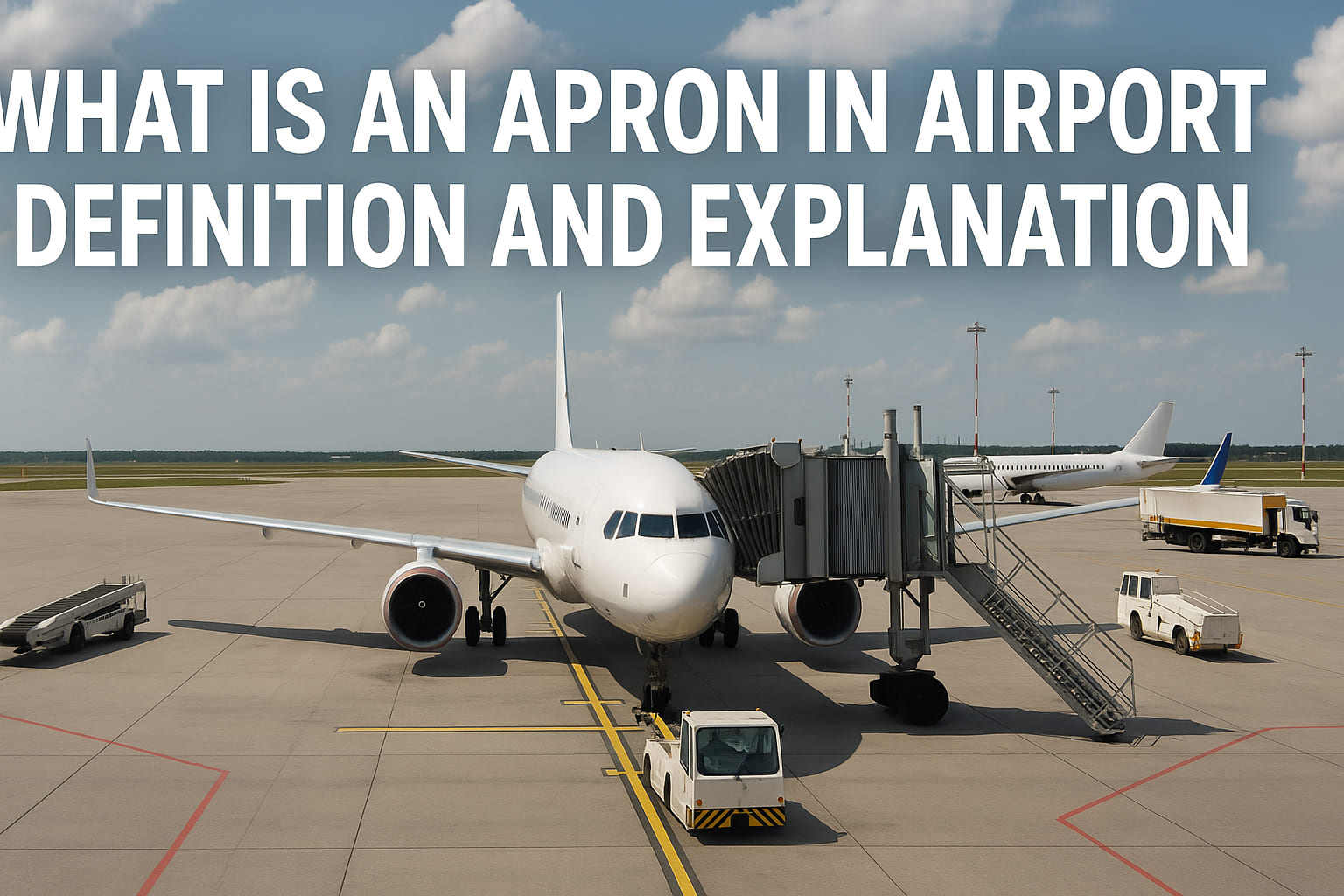The area where aircraft park, refuel, and load by the terminal is the apron. Understanding the airport apron is essential to grasping how flights run on schedule. This space is a hub of activity, distinct from runways and taxiways, where ground crews perform essential services. Here’s how this vital operational area functions.
👉 Check out the offer: airplane engine stand for lease 👈
Understanding the Airport Apron — Definition and Purpose
The airport apron is the paved area where aircraft are parked, refueled, and loaded with baggage, serving as the central stage for ground operations before takeoff and after landing.
The apron’s primary purpose is to provide space for aircraft servicing while allowing ground support equipment (GSE)—from baggage carts to fuel tankers—unobstructed access. Its proximity to the terminal is vital for efficient turnarounds, ensuring flights can depart on schedule.
The apron is a unique zone, not to be confused with other reside areas. While runways are built for high-speed takeoffs and landings and taxiways act as the connecting arteries, the apron is a low-speed, high-activity hub. It functions as the airport’s dynamic parking lot and service station, where every aircraft is meticulously prepared for its next journey.
Functions of the Airport Apron — Key Operations
The apron functions as the airport’s operational heart, where a range of essential pre-flight and post-flight activities unfolds. Key functions include:
- Passenger Boarding and Deplaning: Aircraft connect to terminal gates via jet bridges or use mobile stairs for passengers to embark and disembark.
- Cargo and Baggage Handling: Ground crews use belt loaders and container loaders to move luggage and freight between the aircraft and the terminal.
- Aircraft Servicing: This includes refueling, replenishing potable water, and servicing lavatories.
- Catering: Catering trucks restock the aircraft with food and beverages for the next flight.
- Minor Maintenance and Inspections: Technicians perform routine checks and light maintenance to ensure the aircraft is airworthy.
A fleet of specialized vehicles known as Ground Support Equipment (GSE), from pushback tugs to de-icing trucks, enables these operations. Quick, safe turnarounds and schedule adherence depend on the seamless coordination of this equipment and the ground crew.
Design Principles of Airport Aprons — Safety and Efficiency
The design of an airport apron is a careful balance between operational efficiency and safety requirements. Every element, from its line markings to its parking stands, is engineered to streamline operational flow, enabling rapid aircraft turnarounds while upholding strict security standards.
Efficiency depends on maximizing space. A well-designed apron provides ample room for aircraft to park and maneuver while maintaining clear, unobstructed lanes for ground support equipment.
Safety, critical, is addressed through a combination of standardized markings, powerful lighting, and generous clearance between aircraft. Security is woven into the design as well, with controlled access points and constant surveillance to prevent unauthorized entry and protect everyone involved.
Safety Measures on the Apron — Ensuring Secure Operations
With its constant, movement of aircraft, vehicles, and personnel, the apron ranks among the most hazardous areas of an airport. To mitigate these risks, airports implement a comprehensive system of safety measures designed to create a predictable and orderly environment where every movement is carefully managed.
Visual guidance forms the foundation of apron safety. The pavement is covered in a network of painted markings, from lead-in lines that guide pilots to their stands to safety envelopes that delineate no-go zones around a parked aircraft.
Beyond visual aids, strict operational protocols govern every action on the apron. All ground vehicles must adhere to specific speed limits, and personnel are required to wear high-visibility clothing to remain conspicuous.
Security Features of the Apron — Protecting Aircraft and Passengers
While safety protocols prevent accidents, security features defend against intentional threats. The apron is a highly restricted area, making its security paramount for safeguarding aircraft, passengers, and crew. To that end, a multi-layered system creates a tightly controlled and monitored environment.
Physical perimeter security, typically high fencing with controlled access points, forms the primary barrier. Every person and vehicle entering the apron must pass through these gateways, which are staffed by security and often require credentials like ID badges or biometric scans.
Types of Airport Aprons — Open vs. Closed Designs
Airport apron layouts are tailored to an airport’s size and traffic volume, resulting in two primary designs: open and closed. The fundamental difference between them lies in how aircraft are positioned relative to the terminal and, consequently, how passengers access the plane.
Open Apron Design — Features and Benefits
An open apron is defined by the physical separation between the aircraft and the terminal building. Instead of using a jet bridge, planes park in designated stands on the tarmac, and passengers reach them by walking along marked pathways or taking a shuttle bus. This design is common at regional airports and low-cost carrier terminals where operational simplicity is key.
This design offers key benefits: flexibility and cost-effectiveness. Because it isn’t constrained by fixed jet bridges, it can accommodate a wider variety of aircraft sizes, and its infrastructure costs are significantly lower.
However, the open layout has its downsides, primarily in passenger convenience. Boarding and deplaning are exposed to the elements, which can be uncomfortable in rain, snow, or extreme heat.
Closed Apron Design — Features and Benefits
Unlike open aprons, a closed apron design positions aircraft directly adjacent to the terminal building, a configuration standard at most major international airports. This design is defined by its use of jet bridges—enclosed, movable connectors that link the gate directly to the aircraft door, creating a seamless, climate-controlled pathway for passengers.
The primary advantage is a significant enhancement in passenger convenience and comfort. Travelers can board and deplane through a climate-controlled passage, completely shielded from adverse weather.
Beyond passenger comfort, closed aprons offer superior security and operational efficiency. The jet bridge system naturally restricts movement, tightly controlling access to authorized personnel only. This simplifies security protocols and reduces the risk of unauthorized entry.
Apron Management Services — Coordination and Control
The coordination of aircraft, vehicles, and personnel on the apron is managed by Apron Management Services (or apron control), a specialized unit responsible for coordinating all ground movements to ensure safety and efficiency.
Apron management’s primary role is directing traffic within this specific zone, a responsibility distinct from that of Air Traffic Control (ATC), which manages runways and taxiways. Its jurisdiction is confined to the apron, where it serves as a vital link between flight crews, ground handlers, and the airport tower to ensure seamless handoffs.
Apron Control — Managing Aircraft and Vehicle Movements
Their main duties include allocate parking stands, guide aircraft to and from gates, and manage the flow of all ground vehicles to prevent collisions. Through constant communication with ATC and airline agents, they coordinate everything from servicing and boarding to cargo handling, all while enforcing strict safety protocols to maintain order in a high-density environment.
Effective coordination depends on three elements:
- Clear communication channels
- Real-time monitoring of the apron
- Strict adherence to established operational procedures

